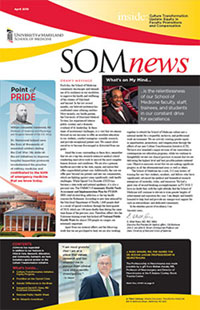Department Buzz
 What's the Buzz at the UMSOM?
What's the Buzz at the UMSOM?
SOMnews, the official newsletter of the University of Maryland School of Medicine, features stories about the outstanding achievements of School of Medicine faculty in the clinical, education and research arenas.
Part of SOMnews, The Buzz is a self reported publication highlighting important grants and contracts, journal publications and awards by our faculty. Delivered by hard copy and email, The Buzz features "What's on My Mind," a monthly message from Dean Reece.

